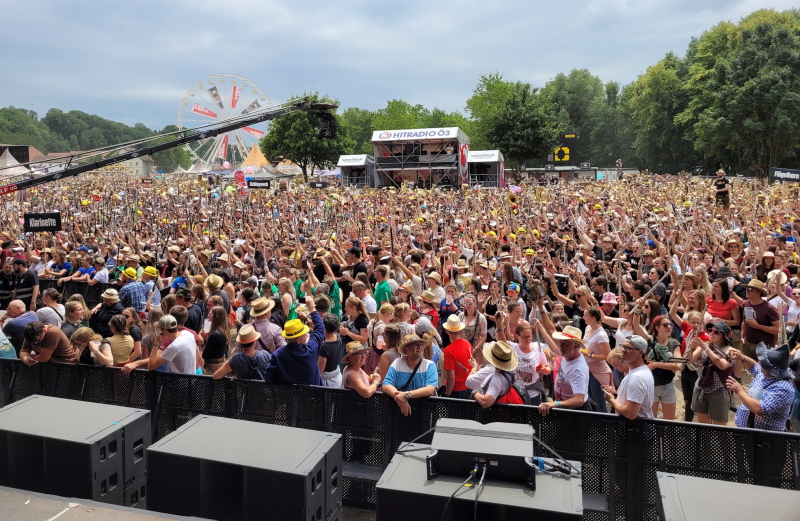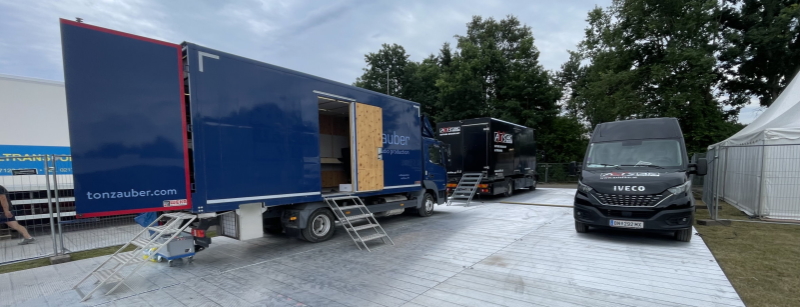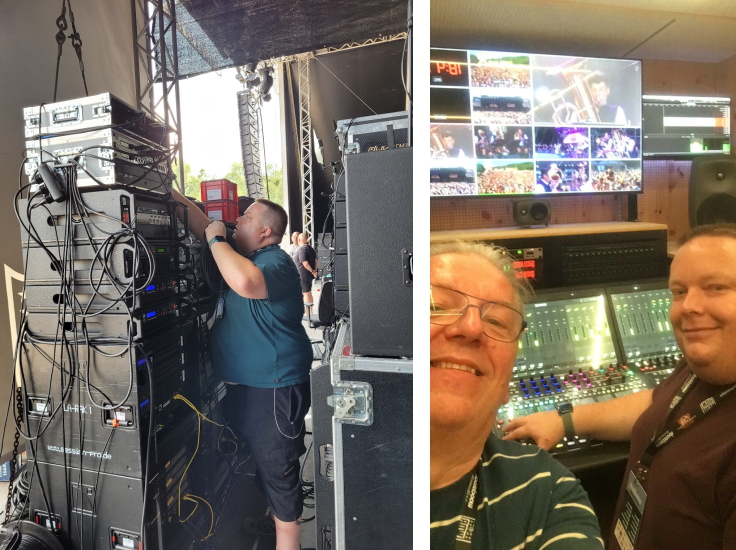Lawo mc²36 MkII for “Woodstock of Brass Music”

The legendary "Woodstock" festival of 1969 – an open-air event of folk and rock music that promised “3 Days of Peace and Music” – remains etched in the annals of music history. Fast forward to today, and the Austrian "Woodstock of Brass Music" (WoB) pays homage to that iconic event with a playful twist. Held annually since 2011 in the charming town of “Ort” in Northern Austria, WoB has earned its reputation as the largest open-air brass band festival in Europe. Drawing inspiration from its American counterpart, this four-day extravaganza in late June welcomes over 80,000 music enthusiasts who revel in the performances of 130 bands, spanning traditional to contemporary brass music. Notably, since 2015, the festival's highlight has been the "Ensemble Playing," an awe-inspiring spectacle that unites a staggering 20,000 musicians.
The Austrian recording studio “tonzauber” took care of the twinned main stage with its own recording / OB truck. The heart of the vehicle’s audio equipment is a Lawo mc²36 MkII audio mixing console with integrated processing. With its A__UHD core technology, it offers 256 processing channels available at both 48 and 96 kHz, making it ideal for even the grandest orchestral productions. The all-in-one mixer natively supports ST2110, AES67, RAVENNA and Ember+ protocols. With an I/O capacity of up to 864 channels and its local connections, the mc²36 MkII offers extensive connectivity.

Georg Burdicek, sound engineer and founder of “tonzauber,” shares his experience: “This year at the Woodstock of Brass Music, we recorded 35 bands over four production days, with 16 of these performances broadcast live on TV and radio by Austrian public broadcaster ORF.” Burdicek explains the logistical intricacies of the “twinned” main stage: “One of the stage’s two sections is always active, with just a five-minute break between concerts. As both stage units were served by a single OB truck, meticulous preparation was key.” Efficiency was paramount during the festival, with a dedicated team of three ensuring everything ran smoothly. One team member gathered information to enable quick and purposeful adjustments to the lineup and channel assignments, while two colleagues took turns at the mixing console.
The mixer configuration was designed to allow permanent fader assignments to each twin section of the stage, while all channels could be accessed independently from the main console via an extended mx GUI. This setup facilitated live mixing of one band while preparing the next, encompassing tasks from channel labeling to line checks using PFL2, with monitoring through a Merging Anubis at the second workstation.

Burdicek highlights the console's exceptional flexibility and DSP capacity: “The Lawo mc²36 MkII handled more than 140 channels simultaneously without a hitch. Signal transmission from the main stage relied on optical MADI, with one MADI stream per stage and, for some bands, a Dante stream. The stage-side frontend featured the Prodigy.MP from directout, complemented by two Lawo A__Mic8s for various additional atmospheric microphones and analog backup signals.”
In conclusion, Burdicek asserts, “The Lawo mc²36 MkII consistently proves itself as an indispensable tool, meeting the most demanding requirements for top-tier recordings and broadcasts of concerts and festivals, such as the Woodstock of Brass Music.”
 How to resolve AdBlock issue?
How to resolve AdBlock issue?